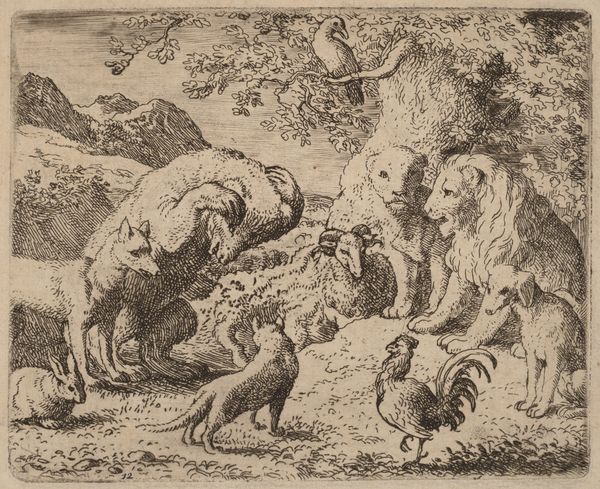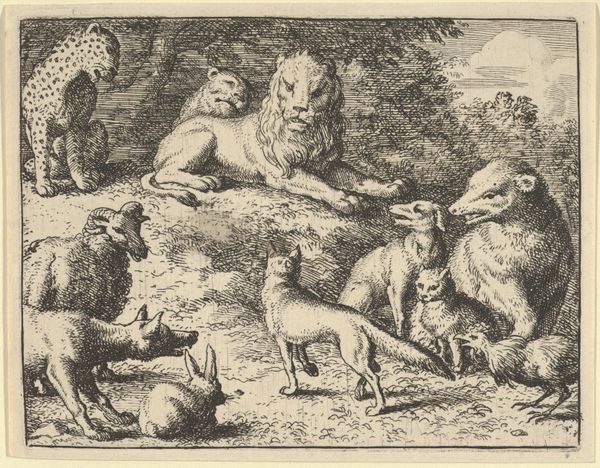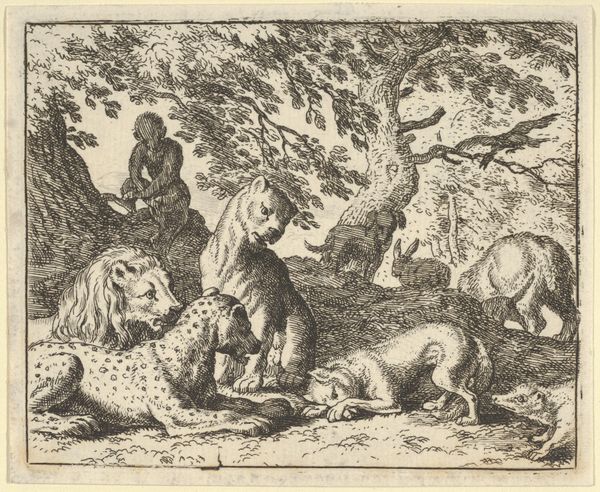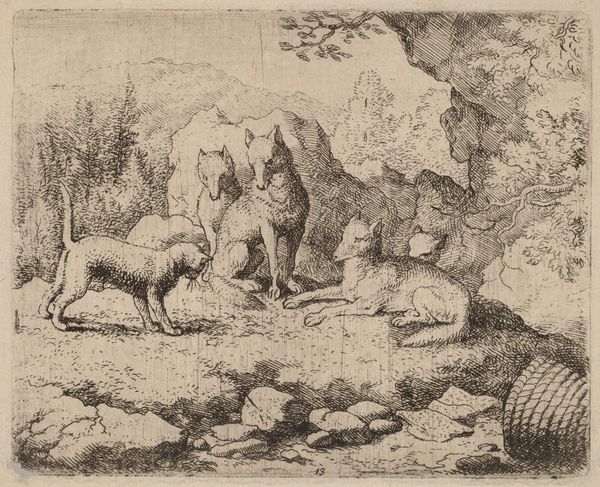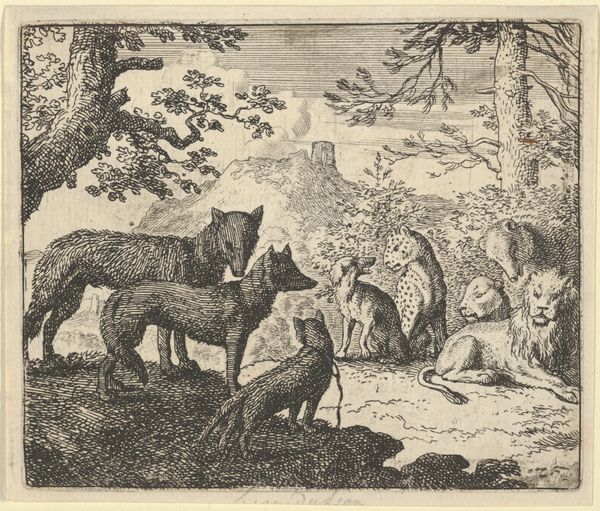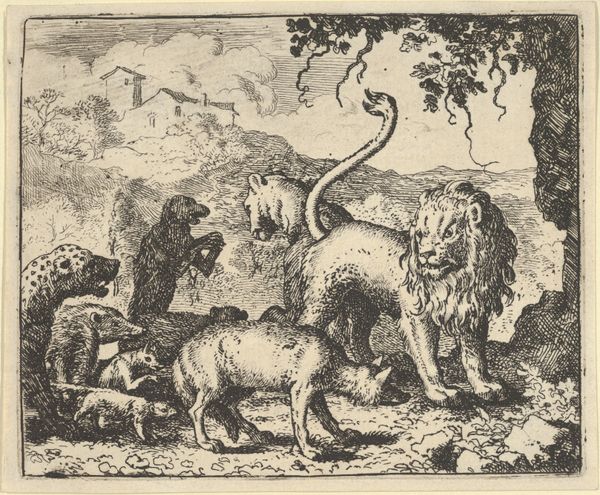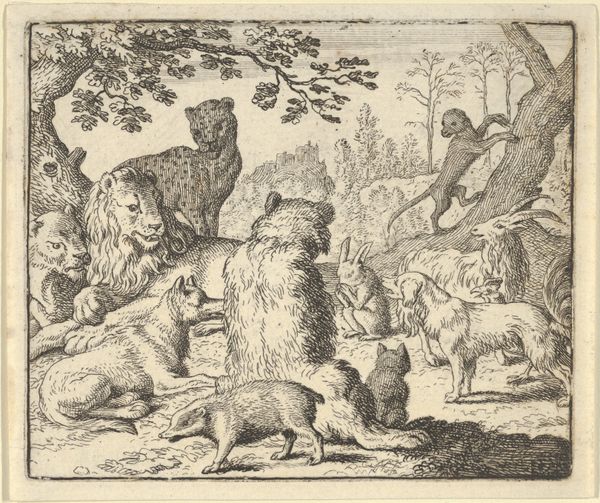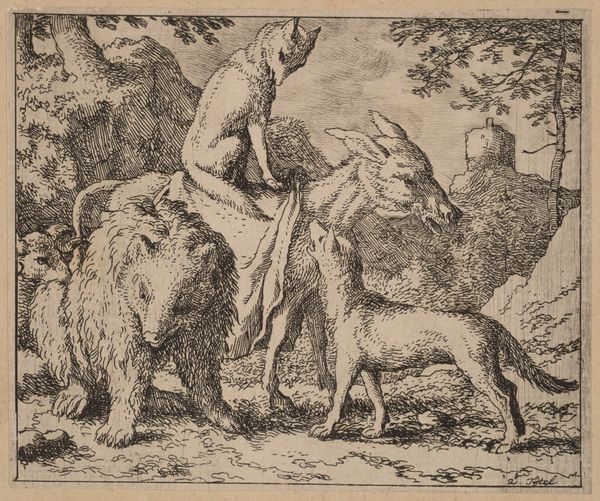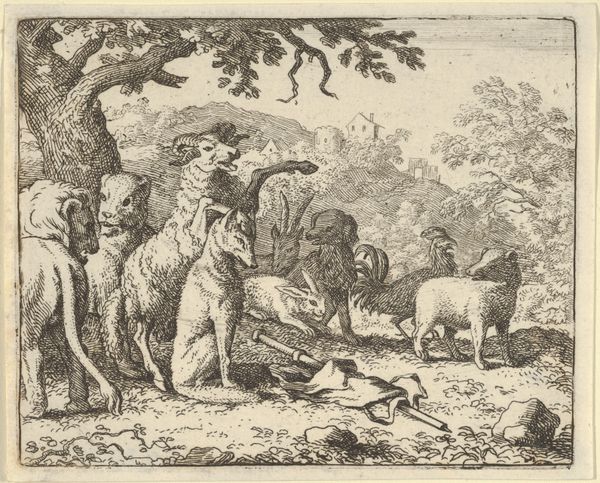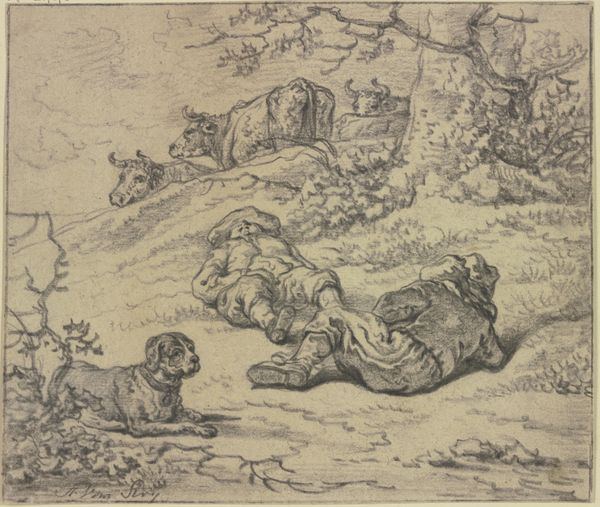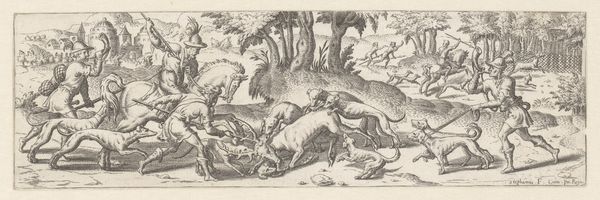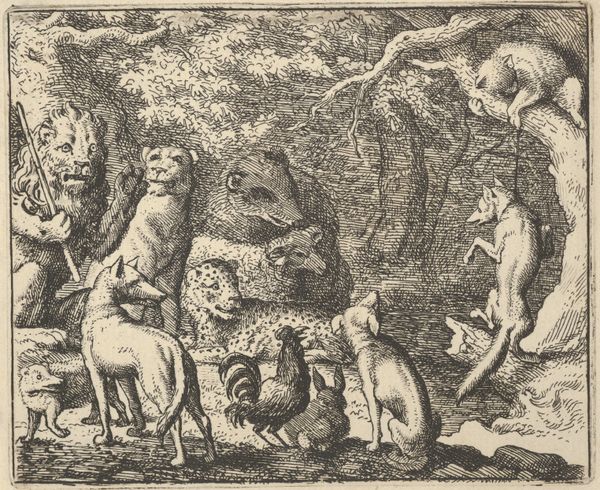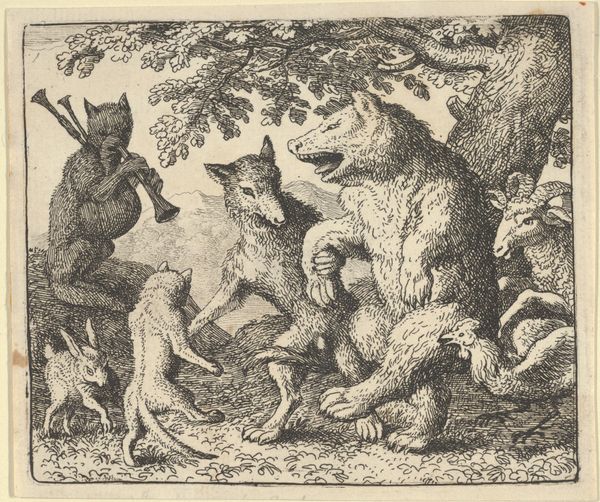
print, etching
#
ink drawing
#
narrative-art
#
baroque
# print
#
etching
#
landscape
#
figuration
Copyright: National Gallery of Art: CC0 1.0
Curator: Allart van Everdingen’s etching, "Reynard's Enemies are Dismayed", dates from around 1645 to 1656. Look closely at the clustered composition, the flurry of etched lines... Editor: It strikes me as darkly humorous, a fable almost. Are those animals confronting a fox? There’s a palpable tension in this scene. Curator: It draws on the medieval cycle of Reynard the Fox, a trickster figure whose cunning allows him to outwit stronger adversaries. Notice how Everdingen uses the crowded space to suggest impending conflict, even a chaotic struggle for power. Editor: Right, it's interesting how printmaking allowed Everdingen to democratize narratives. These stories, traditionally enjoyed by the elite, now become accessible to a broader audience through relatively inexpensive multiples. The act of etching—the biting of acid into metal, the labor involved—becomes part of this transmission. What do the individual animal figures tell you? Curator: They are symbols. The lion, of course, represents authority. The fox is cunning, deceit, and yet perhaps, clever survival. It’s a complex reading because the viewer is put in a position to almost admire the figure because of his ability to succeed, perhaps against oppressive forces represented by the lion and bear. This reflects anxieties during periods of political and economic change. Editor: Thinking about that accessibility again, the detail must have been extraordinary for its time. Imagine the craftsman meticulously rendering these details onto a metal plate, essentially building up tone through labor intensive crosshatching. Curator: And that detail emphasizes the animal’s behaviors – some of them seem aggressive. Everdingen captures each character in a moment of intense psychological charge; there’s no escape from these charged signifiers of violence. Editor: The very act of multiplying this image allows for widespread social commentary. To produce this quantity of work, how was Everdingen working? We should investigate more about workshop assistance, his suppliers of metal, the accessibility and pricing for consumers in this time. Curator: I think this work illustrates just how much these symbols retain power over time, reminding us about both the persistence of such power struggles, as well as art’s social purpose. Editor: Yes, by making the image a physical artifact, open to scrutiny as both material and social commentary, the print allows those themes to multiply through space and time.
Comments
No comments
Be the first to comment and join the conversation on the ultimate creative platform.

